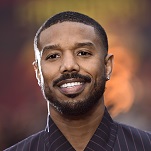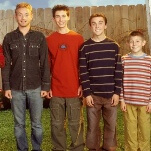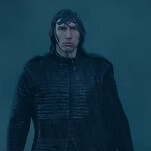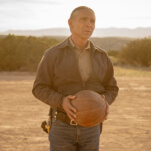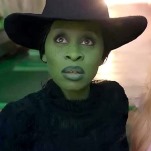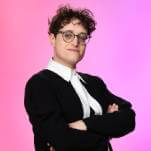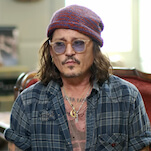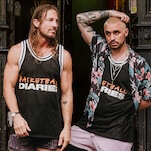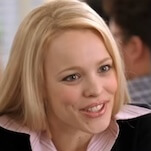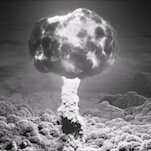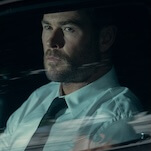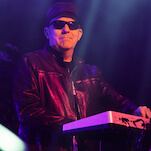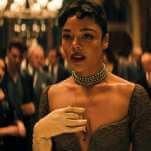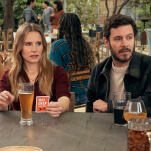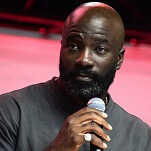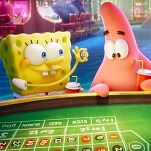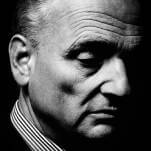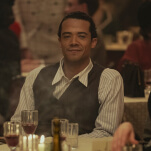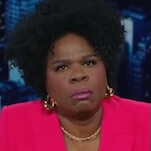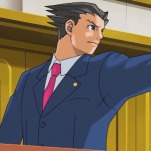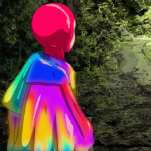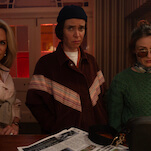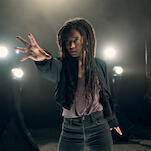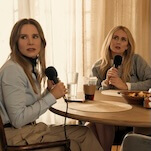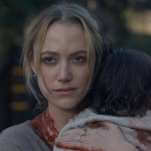Watching Kanye while standing on ancient ruins: A trip to Norway’s Øya Festival
On my first day in Oslo for the Øya Festival, I inadvertently passed the part of town that had been blasted by a local terrorist’s bomb on July 22. The incident—which was the precursor to an even more deadly gun attack by the same perpetrator—had clearly cast a shadow across the beautiful old city. A chain-link fence was covered with flowers and candles left in tribute, and the courtyard of Oslo Cathedral—already partially cleared out—was knee-deep with remembrances and flowers. It was an eerie start, especially considering how magnificent (and sort of quaint) downtown Oslo is.
The clean, friendly city is clearly marching on, though news of the perpetrator did peek from pretty much every newspaper. The organizers of the Øya Festival—who, full disclosure, paid for my hotel and airfare—seemed determined to press on. The TV wanted to talk about the killings, but those gathered in Medieval Park in Oslo’s downtown were ready to take a break from it. There was a ton of international talent on hand to provide a diversion over the five-day festival, which ran from August 9-13.
Jetlag kept me from venturing out the first night—a.k.a. club night—which actually takes place in various venues around the city and consists almost entirely of Norwegian bands. (It should be noted that even though most people surely associate Norway with black metal, there’s clearly a lot more going on than that. And black metal, it seems, wasn’t even represented at Øya.) Instead, I walked around the city center, which features an odd mix of old and new: Look to your right, it’s the Hard Rock Café. Look straight ahead, and it’s Oslo’s amazing Royal Palace. There’s an H&M on every other block, but also an incredible, modern Opera House whose sloping, tiled roof is a popular tourist attraction.
Oh, and a quick two things to know about Oslo: First, everyone speaks English, some more clearly than many native speakers I know. Second, it’s sort of shockingly expensive, especially with the weak U.S. dollar: A burger and fries at a decent (but far from fancy) place cost about $30. A 10-minute cab ride was about $25. A bottle of water at 7-Eleven (which is also everywhere): $6-ish. Oh, but here’s a third thing: Norway is No. 1 on the Human Development Index, which means it’s basically the best place in the entire world to live. (Objectively, scientifically speaking.)
Øya, which started in a much smaller form in 1999, certainly isn’t hurting the city’s style. It gathers some truly big names from all over the world, pairs them with local and up-and-coming international bands, and plops them into a park that’s naturally broken up by a stream and the ruins of the original Oslo. (There’s a sign in Norwegian saying something to the effect of “Please don’t climb or jump on the ruins,” though they’re otherwise unprotected.) There are four stages inside the main grounds (and one just outside for smaller local bands), and the capacity is kept to an incredibly comfortable level—about 16,000 per day. That’s roughly the same as Pitchfork, but in a considerably bigger space.
What this means for festivalgoers is that when it came time for Wednesday’s headliner, Kanye West, you could walk damn near next to the stage five minutes before he walked on—if he were the kind of guy who walked on. No, Mr. West was raised on a construction lift in the middle of the crowd to start the show with “Dark Fantasy.” He made his way to the stage, which was already populated by his menagerie of dancers, to blast through hit after hit for “Act One”—“Jesus Walks,” “Diamonds From Sierra Leone,” “Can’t Tell Me Nothing.” And though the bass was distractingly heavy at the front of the stage, he still killed it. And of course, he took the time to boast (that Watch The Throne was No. 1 in 23 countries, one more than Lady Gaga) and hate (“Fuck the press! They make you de-pressed.” Get it?). Yeezy, on behalf of pretty much the entire press, allow me to say: We really like your music.
But allow me to rewind: I caught bits and pieces of Grant Lee Buffalo, James Blake, and Sharon Jones prior to Kanye’s big finish, as well as a popular Norwegian band called Lukestar, which sounded a bit like Sigur Ros, but on a mission to rock. Nothing blew my mind, though I definitely liked Blake more than the last time I saw him. That might’ve been the setting rather than the music.
I had to bail on Kanye a few minutes early to catch Low at a club a short distance from the festival site. I caught opener Josh T. Pearson’s last couple of songs, which were punctuated by bad jokes and an admonition to some girls in front to stop talking. Pearson fronted a legendary band that went nowhere, Texas’ Lift To Experience, and he recently launched a sort of folky, out-there solo career. Low, as always, was excellent. The band stuck to a lot of songs from this year’s C’Mon, including the devastating “Witches,” which lifts its greatest lyric (“All you guys out there who wanna act like Al Green… You’re all weak”) from a Kool Keith song. Low finished the night with a bold but sincere choice: “Murderer,” a song that examines a character’s willingness to kill in the name of God. Singer Alan Sparhawk explained beforehand that he meant it with respect, and it seemed like the audience got it.


